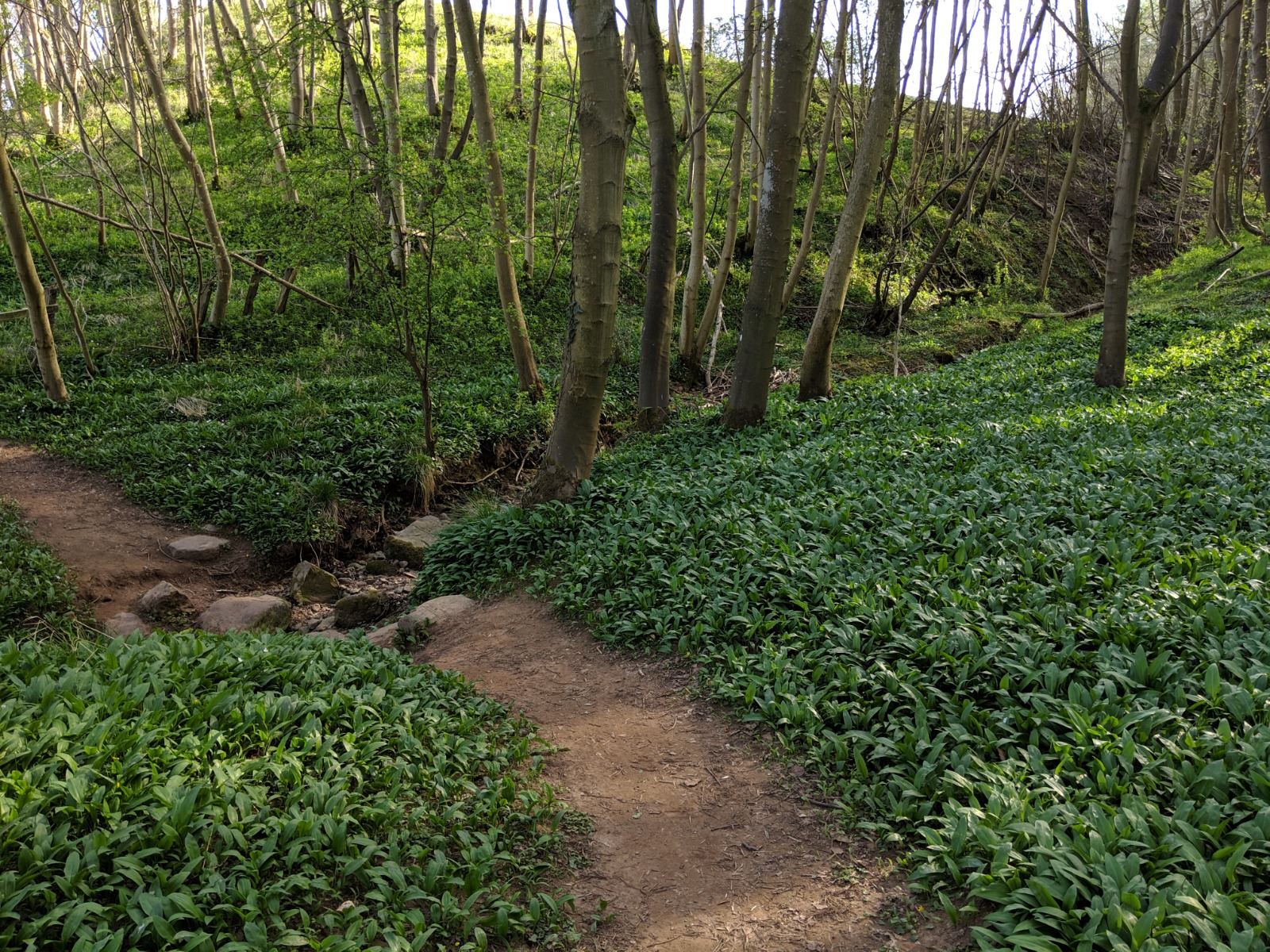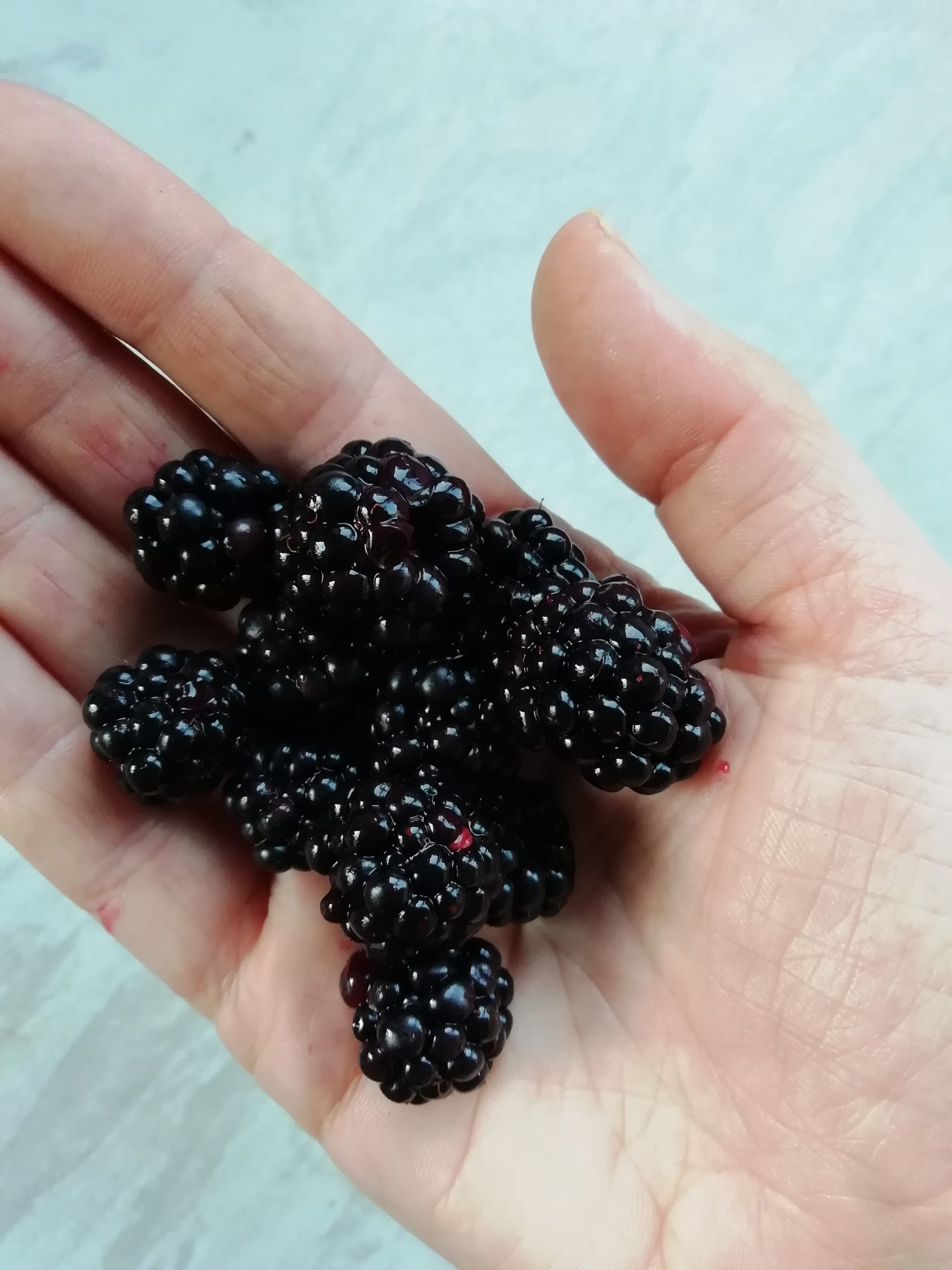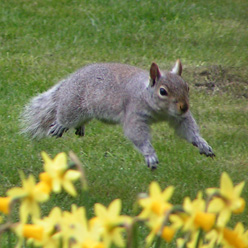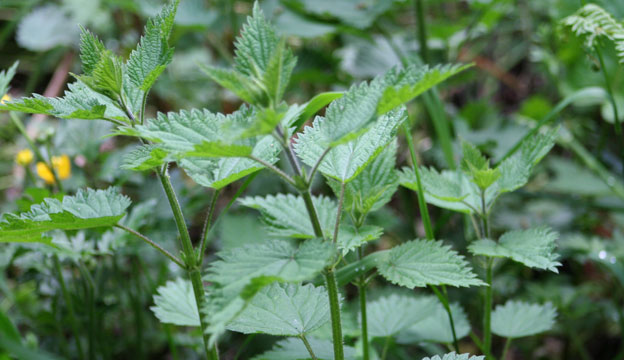There are many areas where wild food can be gathered or caught. Edible plants can be found in hedgerows, in woodland, or along the sea shores – even your own back garden!
Whether picking tasty greens, catching snails, fishing, mushroom hunting, or catching the odd grey squirrel for your lunch, many places hold an abundance of ingredients to be used in your cooking.
Why Forage For Food?
In times past foraging for food was second nature and was important for human survival. Now most of this food foraging knowledge has been lost. Nowadays many commercial scale crops have been forced beyond their means to produce as large a crop as possible, often compromising flavour.
Supermarket bought greens take days after being picked to be delivered from farm to supermarket and can sit on shelves for days again afterwards. All this sitting around loses vitamins, minerals and flavour. There is nothing fresher and tastier than wild foraged greens. They can often be eaten within the hour they were picked (or less if you are lucky enough to find your greens in your own garden.)
Foraging for your own food means you can get the best, when it’s at its best.

Before you start foraging for food there are a few things that are important to know. Although most of these rules are common sense, they are always best kept to. Many plant’s and mushrooms are poisonous and some are in fact deadly. Be careful and always follow these rules.
The Rules
Never put a plant in your mouth, unless completely 100% sure of its identification and edibility. If you are unsure of a wild plant’s identification, don’t put it in your mouth! Don’t consider “pretty sure” as an option. Be safe and leave the plant alone.
When trying wild plants for the first time, you should try tasting a very small amount of the prepared plant to check tolerance. Some people (like those allergic to nuts etc) may be allergic to certain plants the majority will be able to tolerate. If a bad reaction occurs you can avoid further consumption.
Just because one part of a plant is edible (stems, root, leaves), this doesn’t mean the rest of the plant can be consumed safely – Rhubarb for example has poisonous leaves, although their stems make wonderful eating.
Only gather wild food, from safe sources away from pollution (from car fumes, pesticides or other chemicals) always wash before use.
Rights
Always stick to places with public rights of way, designated footpaths, bridleways and country lanes. Here you are entitled to gather as much fruit, leaves, flowers, nuts and mushrooms as you like as long as you don’t uproot or destroy the plant in question- in which case you would have to get permission from the landowner. Certain plants are also protected by law too.
Communal or national parks also have their own rules or foraging and these also should be considered if you intend to forage in these places.
Water ways and sea shores have their own rights of way and these also should be researched before bashing a prize carp on the head an taking it home for lunch.
Pollution can also be a problem in water as well as on land. Whether polluted by agricultural or industrial chemicals or by sewage outlets, it’s recommended to gather some information locally before eating any animal or plant that comes from the water.
Seasons
Just like other British food- wild food has it’s season when it is at it’s best, even grey squirrel has more meat on it at a certain time of year.
Eating seasonally means you can pick what nature has to offer when it’s at it’s best and you can be happy that your food hasn’t made any air miles whatsoever.
Gorgeous Greens
When it comes to collecting wild greens, you’d be surprised about the sort of thing we can eat. Of all these wild greens most have been used for decades in food and drinks, many of these generous plants are now seen as weeds. Think of Dandelion and Burdock for example, both extremely good for you and wildly prolific, even in our own back gardens.
Many garden weeds and common hedgerow plants have been used for centuries as food, medicine and household cleaners.
Here is a list of common plants that can be easily foraged in your local area that are edible and delicious:
Blackberries
Blackthorn (Sloe)
Chickweed
Crab Apple
Dandelion
Elder (Berries & Flowers)
Fat Hen
Field Mushrooms
Good King Henry
Hawthorn (Haws)
Ramsoms (Wild Garlic)
Rosehips
Sorrel
Stinging Nettle
Sweet Cicely
Sweet Chestnut
Walnut
Wild Cherry

Wild Meat
Foragers and grow-your-own enthusiasts alike have probably already tried rabbit or other game pies. Usually bought from specialist suppliers or available from farmers, and more recently local farmers markets. Many high end restaurants will serve rabbit pie, pigeon, even rook pies- a few even have the odd grey squirrel on the menu. Often seen as pests to farmers, gardeners and allotment owners these animals also make good eating. Grey squirrels and rooks and pigeon were once wartime delicacies so why not try them now? -there are obvious reasons for eating them!
There are many opinions on eating animals like the Grey Squirrel. While rabbit is quite traditional and they have been eaten for years in the past, many will still disagree with eating such meats, but to me it makes complete common sense. They’re local, so there are hardly any food miles, low costing and highly tasty!
Grey Squirrel – Good Eating?
It is estimated that Grey Squirrels number at about 6 million in the UK, against a mere 160,000 native red Squirrels. Since Grey Squirrels were introduced to the UK from North America in the 19th Century, not only have Grey Squirrels forced the native Red Squirrel out of it’s habitat, but they are carriers of Squirrel Pox.

While Grey Squirrels have built up anti bodies to Squirrel pox and recover quickly, a Red Squirrel infected by the virus will usually die in as little as 2 weeks.
Red Squirrels are now an endangered species in the UK and is therefore fully protected under UK legislation.
As well as causing problems for the Red Squirrel Grey Squirrels cause havok for British song birds as they will eat birds’ eggs and fledglings in the spring.
So what can we do to help slow the pest that is the grey squirrel?
There has been talk of mass culls by poisoning of Grey Squirrels, but to me it makes more sense to shoot them and put them in the pot. They have a natural diet of fruits and nuts, which make the meat moist and sweet.
Many high end London restaurants are thinking the same way. Butlers Wharf Chop House in London even have a specialist Grey Squirrel and Rook Menu at the moment. The Pelts can be used for gloves and hats and the tails are frequently used for making into flies for fly fishing. None of this animal should go to waste.
Grey Squirrel control by shooting with a pellet gun is probably the best and most humane way- although like rabbits trapping can be effective also. Always get permission of the landowner if you aren’t shooting or trapping on your own land, doing so without permission is poaching, and is a prosecutable offence.
Grey Squirrel can make great eating, with its moist and sweet meat, it’s gamey, low in fat, low in food miles and completely free range!
While there isn’t enough meat on a squirrel to feed a family it will happily feed one person.
Grey Squirrel is great roasted on the BBQ. Southern fried squirrel is good, and tandoori style Squirrel also works well!

